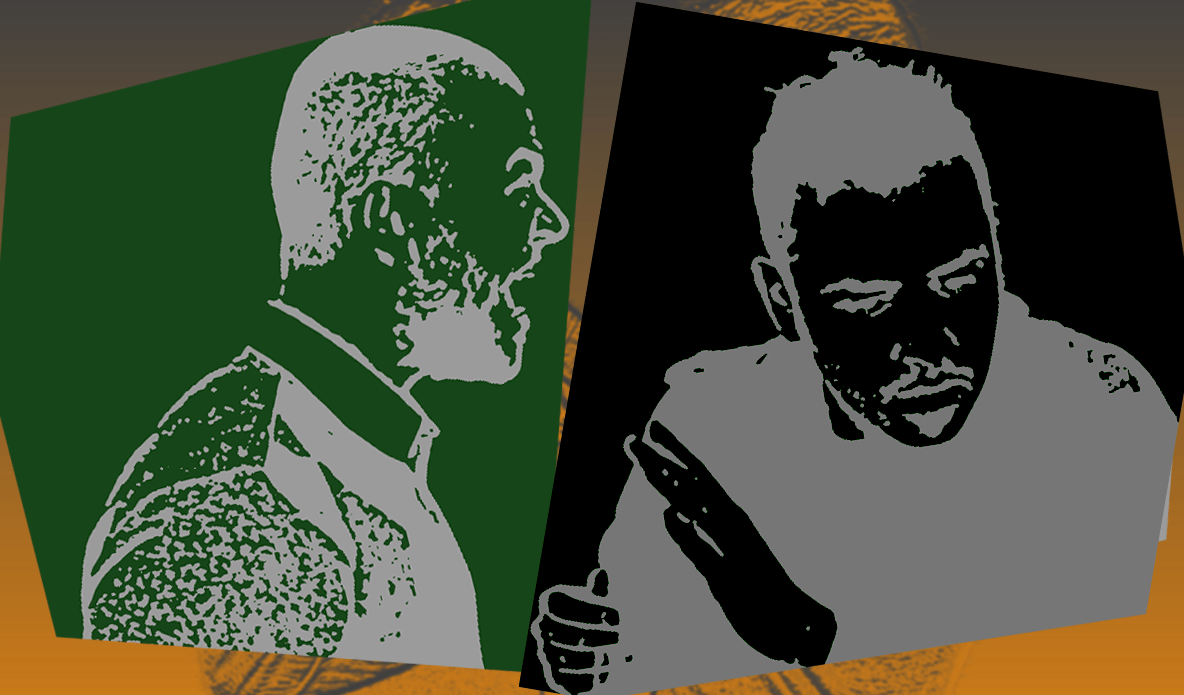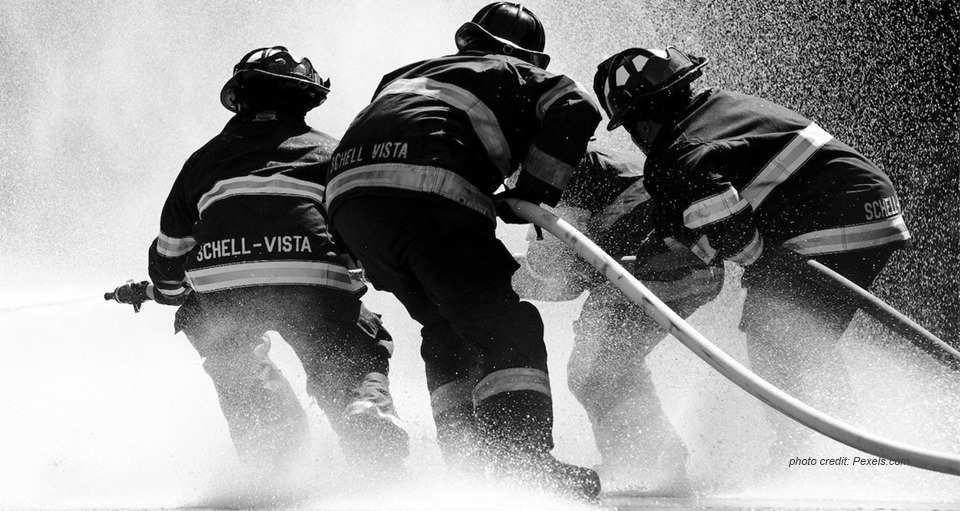Ever had a frenzied ordeal inches from your face? Did you wonder how you might cut and run with no bloodshed?
by Gwenn Jones, CPT
May 25, 2023
Among the endearing, history-laden towns in the Sierra Nevada foothills sits a precious king of the Mother Lode. My several visits to this tender territory begged a snuggly vibe. My core was convinced Marshall Dillon and Festus would mosey out the swinging doors of the Long Branch saloon. A sweet town — a tranquil community. (For you younger folks, Gunsmoke was a long-running TV adult western in which Marshall Dillon was the lead.)
My last visit was a revved-up reversal of tranquil.
My boyfriend, Brad, needed an interim place to live after his house was sold. Dave, a former work buddy, offered him a room in his home which happened to be in downtown Marshall Dillonville.
Dave lived alone in this charming gold rush town, owned his home, and had a spare bedroom and bathroom. A perfectly timed happenstance.
We were invited to freshen the room with a paint job before move-in. Pumped up we picked out paint, and we rolled. I taped down the window and door frames. This took about an hour. Meanwhile, Brad and Dave were outside drinking beers. It was an unamazing two dudes shootin’ the latest sh*t thing.
Taping complete, I flagged Brad inside to begin the mighty transformation. Floor tarped, rollers in hand, the Bradroom transition began. Color choice: a sweet coffee with heavy cream.
Fifteen minutes into our project Dave strolled down the hall. My periphery caught his pause in the doorway. Within seconds, thunder.
Jovial Dave entered screaming, “WTF.” Brad and I froze. Dave’s arm motions to a small 5-inch paint puddle on the tarp. “What are you doing to my house?” He puddle points again and a vicious rant of contempt kicks off. Brad and I are still frozen.
Something was wrong. Dave has evaporated. A purple-faced, screaming monster emerged. More was coming. My brain backpedaled a few years. Uh-oh.
Recall kicked in, I knew
No one is prepared, on a gorgeous spring day for a kitten to turn lion. Mental illness can show its ominous side with the slightest trigger, or not. That is not to say it happens often.
In my years employed at an assisted living facility, I was no stranger to occasional bipolar phases. Bipolar disorder delivers no mercy and favors no age. Though mental health experts indicate bipolar disorder (BD) usually develops in those under age 25, it is a lifelong condition.
The Bradroom day caught me off guard. At our facility, other than a new resident move-in, the staff knew each resident’s profile. Namely, who took what meds, who was in respite, and who suffered what. This was job performance rhythm.
Occasional combative behavior wasn’t news breaking. It wasn’t one moment, calm waters, the next, rage. Our few BD residents were under managed care.
BD events invariably saddened the staff, but we were prepared, rarely surprised, and adjusted to repeated situations. But Bradroom day was different. This day I had:
- a surprise bipolar episode
- triggered anger
- alcohol
The expectation of the day’s end to be delightful vanished. How will I deal with a lovely man I barely know on the verge of rage?
“You’re ruining my house — get out,” throttled my ears. Brad coolly reasoned this was a little spill, the floor is protected. Dave inched forward yelling abusive language and the two are chest-to-chest now. Brad said nothing but his eyes exposed an agony so severe I thought his tall frame would completely dismantle. Vibrations filled my body.
This small room just became smaller
It’s unmistakable. Dave was having an episode. His stance was jacked, undeterred, and the small bedroom just became smaller. Dave’s position blocked a clear path to the door (though unintentional).
An encounter that happens lightning-fast needs a reaction just as fast. The first ingredient of that recipe is to stay calm. Safety first, safety smart.
Can a person with bipolar disorder control their actions?
They were so close I could only slip my arm between them. My small 5 foot-3-inch body could not shimmy through (bad idea).
Brad was still frozen, staring, inciting nothing. I found my recall. With Dave still in flames I made eye contact and whispered slowly, everything will be fine, we’re leaving now.
So I tugged at Brad’s shorts and we shuffled out of the room. Dave shadowed close behind still on a rant. He wanted us out. All I now wanted was out.
But it truly appeared Dave did not want violence. His demeanor upon our escort took more of a my way or the highway posture. Looking back, it seemed he was aware and in control of his grisly behavior escalating.di

Handling bipolar anger
During a BD episode, we must not argue, disagree, or criticize. Calm is the most effective echo. Calm leads to the safest outcome. Therefore, leaving immediately was the right decision in this situation. A potentially violent scene was averted.
The story ended here for Brad’s coffee-with-cream digs. On the drive home, I asked if Dave was bipolar. Brad confirmed it along with his refusal to seek mental health therapy. This rejection or fear of treatment makes for a sad and rabid future as if not treated, episodes can worsen with age.
Dave’s torment left me heartbroken for him.
Is it possible to live a normal life with bipolar disorder?
Yes. For a BD sufferer, management is the framework for techniques that reduce exaggerated mood swings. Various treatments today manage BD quite successfully to the point where one can live a productive, fruitful life.
What could I have done differently?
I met Dave only once when he did electrical work at my business. (Brad hired him for me.) His demeanor was sweet and huggable, dimples framed both sides of his mouth. His smile I’d describe as cuddly.
Now you might question, why didn’t I calm him down and reason with him that day?
Getting back to triggers — alcohol, that’s why. Alcohol and bipolar disorder are a dangerous mix. Whether on medication or not, drinking can lead to a heightened intensity of mood swings, impulsiveness, and even potential violence. Alcohol can trigger.
Stressful circumstances can trigger too. For instance, negative events can include lack of sleep, medication, trauma, drugs, alcohol, or a death. Or, this day, this spot on this floor. This tripped stress in Dave and with several beers in, we had TWO triggers. Brad did not have the knowledge that skipping the beers might have avoided this event. Had we stayed to untangle it we might have made the evening news.
Was it Dave’s ego, fear, or denial that eclipsed help?
Expert organizations reveal bipolar sufferers often feel a stigma of embarrassment or incompetence. Anosognosia is one descriptive term. Healthline describes Anosognosia as…
…a person’s inability to accept that they have a condition that matches up with their symptoms or a formal diagnosis. Anosognosia is a result of changes to the brain. It’s not just stubbornness or outright denial, which is a defense mechanism some people use when they receive a difficult diagnosis to cope with. In fact, anosognosia is central in conditions like schizophrenia or bipolar disorder.
All said and done
It’s 15 years since I worked at the assisted living complex. My close relationships with 120 residents sparked my interest in studying BD. I’m no expert but I wanted to better serve our elder residents.
Outside of the “F” word heard over our walkies (known as FALL), the facility trained us very little. However, a wellness position ignites a fierce desire to learn more, be better, and serve better, especially for our seniors.
This writing is not intended to frighten. It’s not intended to generalize that a raw bipolar encounter like this is common.
Education is the crux to preparedness for someone in your life with bipolar illness. It can make all the difference for us to fully support a loved one who might be falling. We must be mindful that this doesn’t happen, and might never happen… until it does.
Mental illness is a mammoth world of the unpredictable, the unknown, and the profoundly uneasy. Navigating through information is a jungle but there is treatment out there.
Finally
Should you land in a situation such as this, first, don’t show panic. Stay calm and read the room. Address the easiest and safest method for all present to extinguish the potential trigger — if it’s apparent. It might not be. Avoid arguing or criticizing. In my situation we were asked to leave, we did so quietly. Though I was able to calm Dave down a bit this day, no two events are the same for anyone. We cannot fix BD events. We can only support.
Occasionally, I pass through this Long Branch town. Dave pops into my head each time — always with fond thoughts of his baby-sweet smile.
I pray he finds peace. I hope he seeks support. I hope he wants to talk (to anyone). I’m here.
— Originally published on Medium.com

Article by:
Gwenn Jones, CPT — Content writer in Wellness-Lifestyle-Fitness, Gwenn is a 25-year ACE-certified personal fitness trainer, yoga studio owner, instructor and fitness consultant. Grateful to be a native Californian where happily home-based.
Resources:
Hope Gillette, Medically Reviewed by Nicole Washington, DO, MPH. “9 Triggers for Bipolar I Disorder Mood Episodes and How to Manage Them.” Healthline, Jan. 25, 2023, https://www.healthline.com/health/bipolar-disorder/bipolar-mood-episode-triggers
Mayo Clinic Staff. “Bipolar Disorder,” Dec. 13, 2022. https://www.mayoclinic.org/diseases-conditions/bipolar-disorder/symptoms-causes/syc-20355955#:~:text=Overview,or%20pleasure%20in%20most%20activities
Cleveland Clinic. “Bipolar Disorder.” Last reviewed Apr. 12, 2022. https://my.clevelandclinic.org/health/diseases/9294-bipolar-disorder#:~:text=What%20is%20bipolar%20disorder%3F,levels%2C%20thinking%20patterns%20and%20behavior.
Melinda Smith, M.A., Jeanne Segal, Ph.D. and Lawrence Robinson. “Bipolar Disorder Symptoms, Causes, Types, and Diagnosis,” May 11, 2023, https://www.helpguide.org/articles/bipolar-disorder/bipolar-disorder-signs-and-symptoms.htm#:~:text=In%20the%20manic%20phase%20of,invincible%2C%20or%20destined%20for%20greatness
Clearview Treatment Programs. “Can I Drink Alcohol if I have Bipolar Disorder?”, Jan. 22, 2018, https://www.clearviewtreatment.com/resources/blog/can-drink-alcohol-bipolar-disorder/#:~:text=Individuals%20with%20bipolar%20who%20drink,who%20do%20not%20drink%20alcohol









